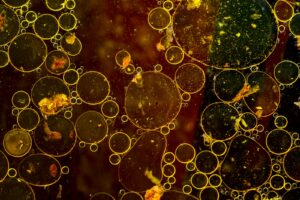Why our notion of pesticides best practice needs to radically change
The amenity sector – all those areas that are not agricultural or amateur gardens – is the second largest user of pesticides in the UK, covering 4-5% of total pesticides used. Compared to agriculture, this is not a huge amount, but when looking at the number of people that could be exposed to potentially harmful chemicals, amenity use grows in significance.
Millions of people live, work and play in the towns and cities of the UK, the parks, schools, streets, sports pitches and playgrounds of which are treated with pesticides regularly.
The most recent survey of amenity pesticide use, undertaken by the Food and Environment Research Agency (FERA), was published in 2012. That report looked at both the quantitative and qualitative use of pesticides in the amenity sector. In total, it found that there were then 41 different types of active substance used in the amenity sector. Of those, the most frequently used 15 are all linked with potentially harmful human health effects (see table), and there is no, or very little, research into their health effects when used in combination, as they mainly are.

Despite attempts over the years to limit the harmful outcomes of amenity pesticide use, pesticides are still finding their way into our water supply and have costly implications for water treatment facilities annually. This accumulation of pesticides is due to run-off from spraying on streets and parks, where there is often no prior notification for the public using those spaces. Pesticides are also often applied by blanket spraying from quad bikes and the like, thus hitting non-target areas too, which is not only wasteful but an excessive use of what is effectively a poison. Blanket spraying is an issue, however, that both regulation and best practice guidelines have tried to deal with, but is still ongoing.
PAN UK has been campaigning for pesticide-free towns in the UK for some time now and we are starting to see success. But councils need to feel that non-chemical approaches are workable
While best practice guidelines, and the small amount of regulation that applies to the amenity sector, promote useful ways of reducing the potential harm from amenity pesticides, they are, in reality, ineffective. In particular, voluntary measures have failed to control how and where pesticides are used. Leaving the industry to police itself has opened the door to poor practice, particularly from those operators that are less than scrupulous in the way they work, or who have tight economic margins.
So what should be best practice for the amenity sector? Pesticide Action Network UK (PAN UK) advocates that the only truly safe use of pesticides is no use of pesticides. In towns and cities, there is no need at all to use pesticides and the evidence of the ever-growing number of towns and cities throughout the world that are managing their open spaces without resorting to pesticides is testament to that. Viable, cost effective, and sustainable alternatives are available and are proving successful wherever they are used. We are not growing crops in our towns and cities, we are growing our children and they should not be needlessly exposed to potentially harmful chemicals.
Admittedly, switching away from pesticides is not necessarily an easy process, but growing concern from the public with pesticide-free campaigns and petitions demonstrates that this is what the public wants. PAN UK has been campaigning for pesticide-free towns in the UK for some time now and we are starting to see success. But councils need to feel that non-chemical approaches are workable.
To that end, PAN UK is holding a one day workshop for councillors and council officers to look at the how to make their areas pesticide-free. The free all day conference, held at the Brighthelm Centre on November 18 in Brighton, will look at a wide range of related issues such as the drivers for going pesticide-free; the problem with pesticides; and of course, the practicalities of how to go pesticide-free and what alternatives are available. We will also be launching our new toolkit for councils on how to achieve a pesticide-free town.
In conclusion, best practice in the amenity sector is no pesticides at all!
















